All plants belong to the kingdom Plantae. Within this kingdom, plants are in two types: nonvascular and vascular. Within the vascular category, plants are further divided into spore-producing and seed-producing, while all nonvascular plants are spore-producing.

Mosses are nonvascular, meaning they do not have a vascular system.
©fongbeerredhot/Shutterstock.com
Summary
Plants vary in many ways, including physical appearance, structure, habitats, and nutrient requirements. It’s estimated there are 320,000 plant species on Earth. With this many different types of plants, researchers need to find ways to organize them for studying botany.
Plants are grouped into two major types: nonvascular and vascular.
- Nonvascular plants (bryophytes), including mosses and hornworts, do not have a vascular system. These were the first type of plants to evolve on Earth.
- Vascular plants (tracheophytes) have a vascular system (a system of tubes that connect all parts of the roots, plants, shoots, and leaves.)
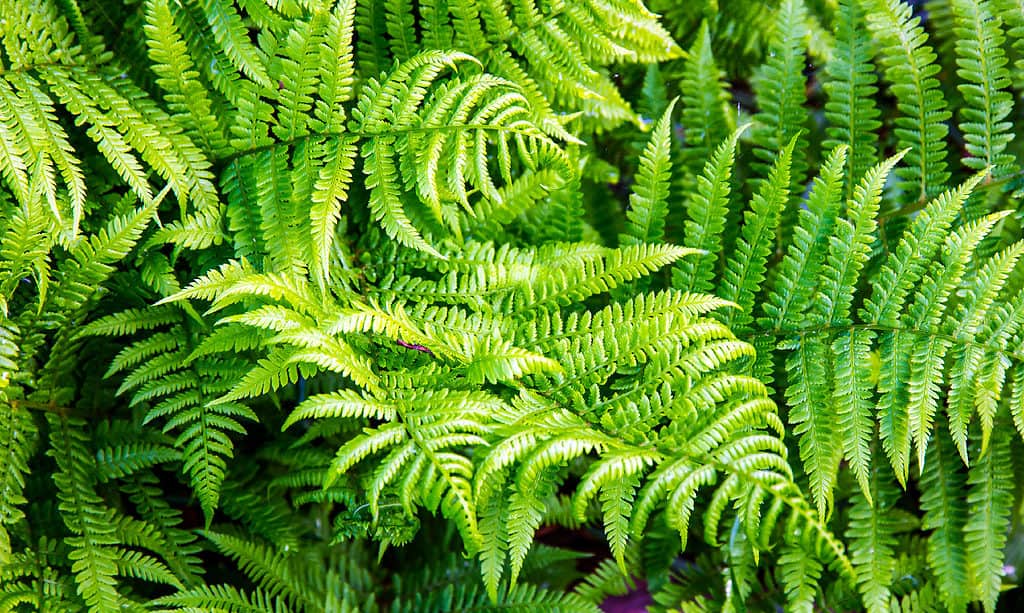
Ferns are vascular plants that produce spores.
©iStock.com/troyka
Plant Types (Nonvascular versus Vascular)
- Nonvascular Plants
- Moss, liverworts, and hornworts (bryophytes)
- Vascular Plants
- Spore Producers
- Ferns
- Seed Producers
- Flowering (angiosperms)
- Non-flowering (gymnosperms)
- Spore Producers
Characteristics of Nonvascular Plant Types (Bryophytes)
Nonvascular plants are bryophytes. These are plants that do not have a vascular structure. They are the first type of plants to have evolved in the world. Scientists have found evidence of liverworts appearing in the fossil record around 470 million years ago.
Nonvascular plants reproduce by spores that are dispersed by the wind. This is in contrast to seed-producing plants in which seeds are enclosed in a fruit.
Most nonvascular plants are small. They are not anchored to the ground with roots. Instead, they have hair-like rhizoids which keep them grounded and help them absorb water and nutrients. Bryophytes must live in moist habitats because rhizoids are not as efficient as a vascular root system at absorbing water.
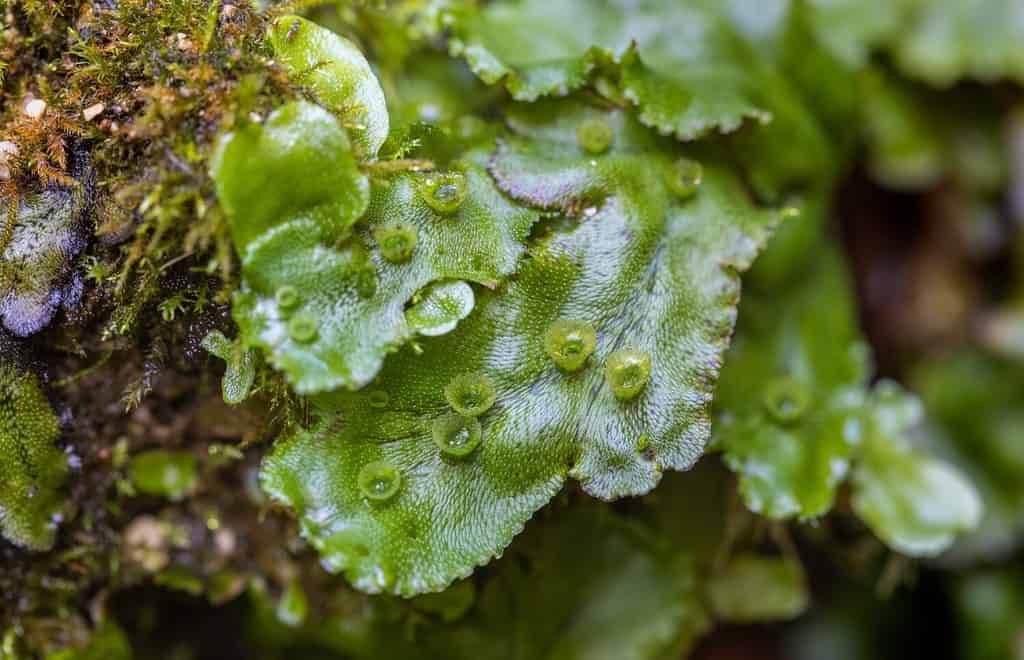
Scientists have found evidence of liverworts appearing in the fossil record around 470 million years ago.
©goran_safarek/Shutterstock.com
Three Types of Nonvascular Plants
- Hornworts are small plants that live in warm, moist habitats such as rainforests and along waterways. They get their name from their hornlike spore-bearing stalk called a sporophyte.
- Liverworts, like hornworts, also live in damp environments and reproduce by spores.
- Mosses are rootless spore-producing plants found in various types of habitats. Moss thrives in wet conditions.
Characteristics of Vascular Plants
Vascular plants comprise a diverse group of around 260,000 different species. Vascular plants can grow much larger than nonvascular types thanks to their system of tubes (roots, stems, and leaves) that connect all parts of the plants. Additionally, this system transports water and nutrients efficiently through two separate transport systems, the xylem, and phloem.
Vascular plants consist of a root system and a shoot system. The roots support the plant below the ground. The shoot system is made up of leaves and stems.
There are two types of vascular plants, which include spore producers and seed producers.
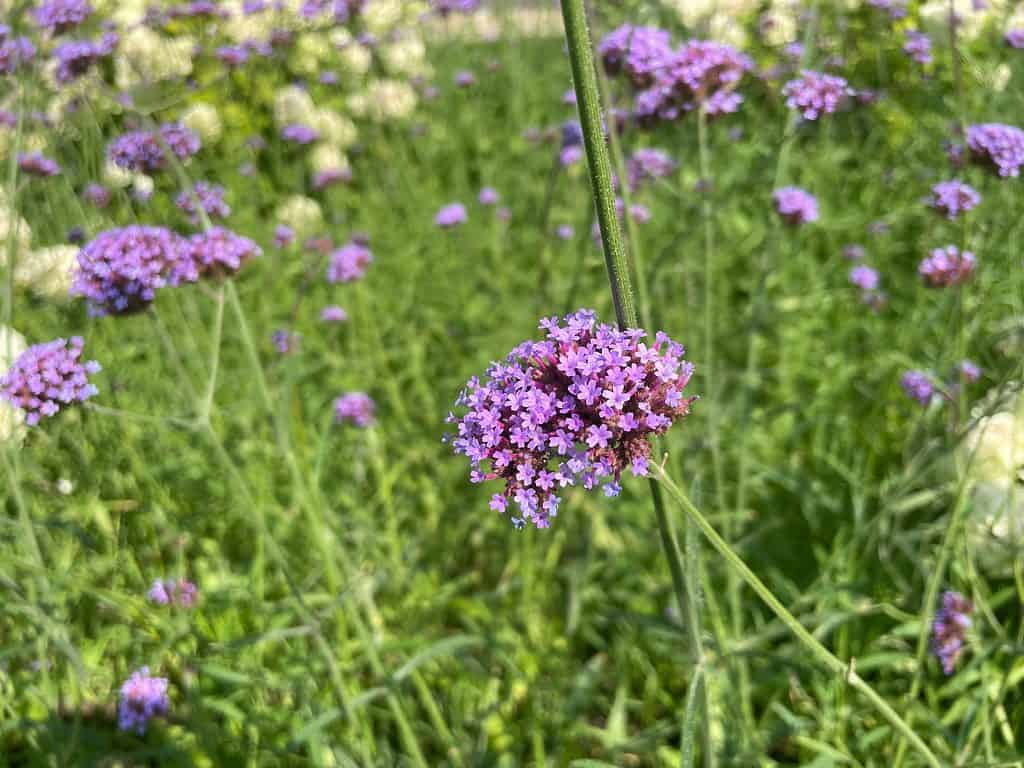
The verbena plant is a seed producing vascular plant.
©slavesofillusion/Shutterstock.com
Examples of Spore-Producing Vascular Plants
Vascular plants, also called pteridophytes, produce spores and they include:
- ferns (tongue ferns, water ferns, tree ferns, bracken ferns)
- club moss
- spikemoss
- horsetail
- scouring rushes
Characteristics of Seed-Producing Vascular Plants
Seed-producing plants contain two types: those with flowers and those without. Angiosperms, or flowering plants, have seeds enclosed within a fruit. In contrast, gymnosperms, or non-flowering plants, have naked (or unenclosed) seeds on the surface of their leaves.
Although gymnosperms evolved on Earth several hundred million years before flowering plants appeared, angiosperms are now more abundant and diverse. Further, flowering plants have a more specialized seed that develops inside the ovary of a flower protected by fruit. With the emergence of flowers came the importance of pollinating insects, which helped increase the diversity of angiosperms.
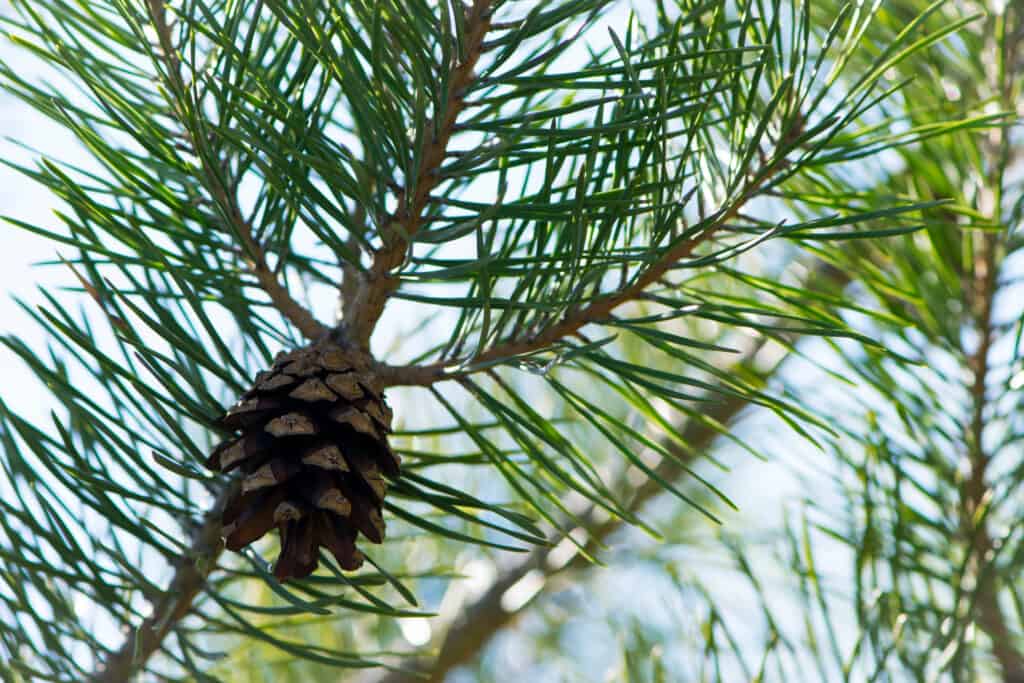
Both loblolly and longleaf pine trees are coniferous.
©Oleksandr Filatov/Shutterstock.com
Gymnosperms (Non-Flowering) Examples
Gymnosperms can be divided into four of the following groups:
- Conifers are cone-bearing evergreen trees and shrubs such as cedars, firs, pines, redwoods, spruces, and yews.
- Cycads are an ancient group of woody plants that existed during the Jurassic period.
- Gnetophytes are trees, shrubs, creepers, and vines.
- Ginkgos are large, woody trees native to south-central and southeast China. Gingko trees are sometimes called “living fossils” because the tree has existed for hundreds of millions of years.
Angiosperms (Flowering) Examples
Angiosperms are a diverse group that includes many different types such as:
- Grains (barley, bulgur, corn, oats, and rice)
- Fruit trees (apple, banana, cherry, coconut, mango, and orange)
- Trees (oak, maples, dogwoods, magnolias)
- Roses
- Lilies
- Petunias
- Sugarcane
- Grasses
- Orchids
- Herbs
- Tomatoes
- Eggplants
- Daffodils
- Bamboo
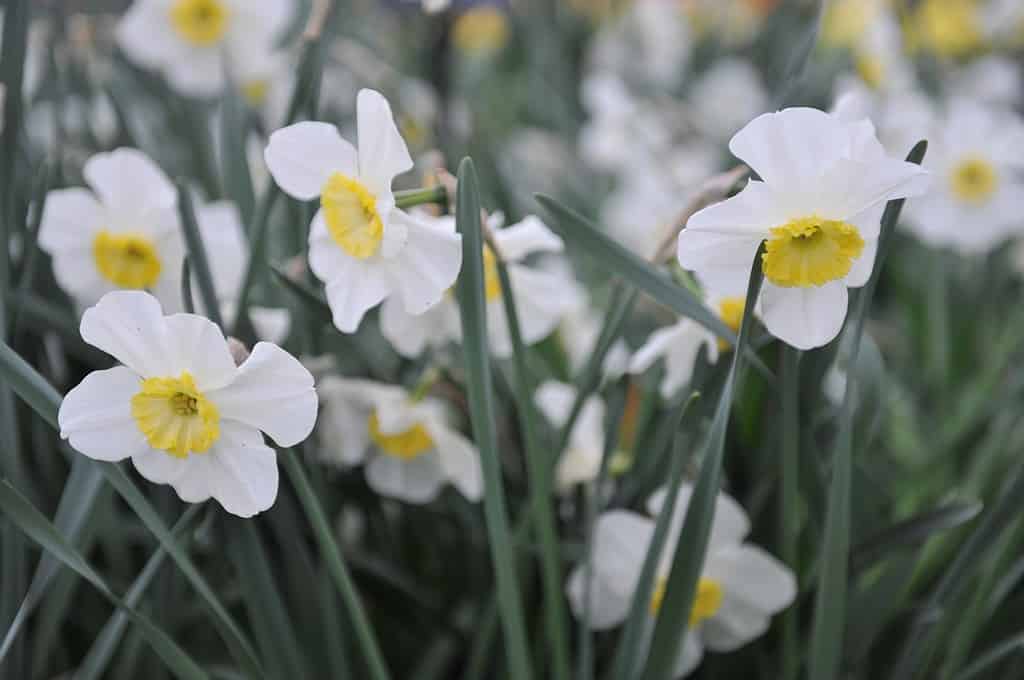
Daffodils are flower producing or angiosperms.
©Sergey V Kalyakin/Shutterstock.com
Types of Plants Based on Life Cycle
Another way to categorize plants is based on their life cycles. For example, plants can continue to grow for years, or they may have a short life span of only a few weeks.
Plant types based on life cycle include:
- Annual plants only live for a year or less such as growing crops (peas, watermelon, tomatoes, maize.)
- Biennials take two years to complete their cycle of growth. These include carrots, dill, potatoes, and hollyhocks.
- Perennials have the longest life span and can grow for years. These include hostas, daylilies, oregano, and strawberries.
- Ephemeral plants only live for a few weeks or less and include bloodroot, red trillium, and Virginia bluebells. Spring ephemerals are perennial plants that emerge early in the spring and die back to their underground parts in a few weeks or less.



